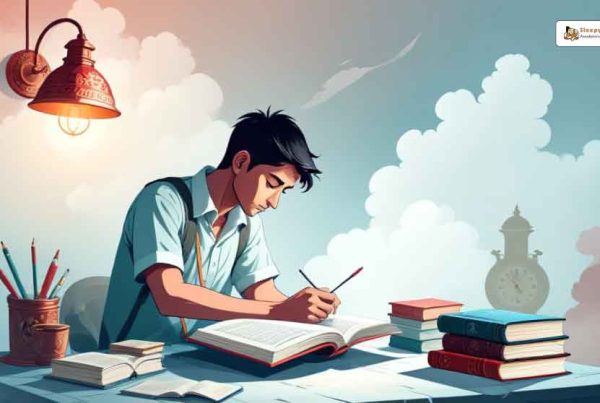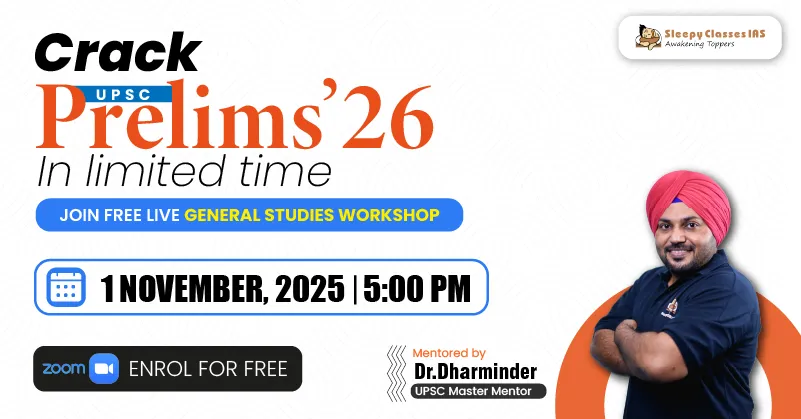In India, the fight for gender equality is complicated by many forms of discrimination. Intersectionality helps us understand how different factors like caste, religion, and class come together to create unique challenges for people. This article explores how these overlapping discriminations affect women in India and what can be done to address them.
Key Takeaways
- Intersectionality helps us see how different kinds of discrimination connect and affect people in unique ways.
- Dalit women face both gender and caste discrimination, making their struggles more complex.
- Muslim women and women from other religious groups also face unique challenges because of their multiple identities.
- Economic inequality adds another layer of difficulty for women in informal labor sectors.
- Legal frameworks need to better address the multiple forms of discrimination women face in India.
Understanding Intersectionality in the Indian Context
Defining Intersectionality
Intersectionality is a term used to describe the idea that social relations involve multiple intersecting forms of discrimination. It rejects a narrow understanding of equality where markers of discrimination are viewed in isolated spheres. Instead, it looks at how different aspects like gender, caste, religion, and class come together to create unique experiences of discrimination.
Historical Background of Intersectionality in India
In India, the concept of intersectionality has deep roots. Historically, various forms of discrimination have overlapped, affecting people’s lives in complex ways. For example, a Dalit woman may face discrimination not just because of her gender but also due to her caste. This layered discrimination has been part of India’s social fabric for centuries.
Key Theoretical Frameworks
Several theoretical frameworks help us understand intersectionality in India. These include:
- Critical Race Theory: Focuses on how race and caste intersect with other social categories.
- Feminist Theory: Examines how gender discrimination interacts with other forms of inequality.
- Postcolonial Theory: Looks at how colonial history impacts current social structures and discrimination.
Understanding these frameworks is crucial for addressing the multiple forms of discrimination that people face in India.
Gender and Caste: A Dual Burden
Case Studies of Dalit Women
Dalit women in India face a unique combination of challenges due to their gender and caste. Their experiences of discrimination are not just a sum of different biases but a unique blend of intersectional issues. For instance, Dalit women often encounter barriers in accessing education and healthcare, which are compounded by their social status.
Impact on Education and Employment
The dual burden of gender and caste significantly affects Dalit women’s opportunities in education and employment. Many Dalit girls drop out of school early due to societal pressures and lack of support. In the workplace, Dalit women frequently face discrimination, limiting their career growth and financial independence.
Legal Protections and Gaps
While there are laws in place to protect Dalit women from discrimination, gaps remain in their implementation. Legal frameworks often fail to address the intersection of gender and caste adequately, leaving many women vulnerable. Advocacy and activism are crucial in pushing for more comprehensive policies that consider these intersecting identities.
The intersection of gender and caste creates a complex web of discrimination that requires targeted and nuanced solutions.
Religion and Gender: Navigating Multiple Identities
Muslim Women’s Experiences
Muslim women in India face unique challenges due to the intersection of their gender and religion. They often encounter discrimination in both public and private spheres, affecting their access to education, employment, and social services. The practice of triple talaq, although now banned, has historically placed Muslim women in vulnerable positions.
Intersectionality in Hindu and Christian Communities
In Hindu and Christian communities, women also navigate multiple layers of discrimination. Hindu women, especially those from lower castes, face barriers that are both religious and caste-based. Christian women, particularly from marginalized groups, often struggle with limited access to resources and opportunities. These intersecting identities create a complex web of challenges that require nuanced solutions.
Policy Implications
Addressing the intersectionality of religion and gender in India requires comprehensive policy measures. Current laws often fail to consider the unique combination of intersectional discrimination faced by women from different religious backgrounds. Policies must be inclusive and sensitive to the diverse experiences of these women to be truly effective.
The intersection of gender and religion in India highlights the need for policies that recognize and address multiple forms of discrimination. Without this, efforts towards gender equality will remain incomplete.
Class and Gender: Economic Inequality
Women in Informal Labor Sectors
Women in India often find themselves in informal labor sectors, such as domestic work, street vending, and small-scale farming. These jobs are usually low-paying and lack job security. This economic vulnerability is compounded by gender discrimination, making it difficult for women to achieve financial independence.
Access to Financial Resources
Access to financial resources is another significant challenge for women. Many women do not have bank accounts or access to credit, which limits their ability to start businesses or invest in education. Microfinance initiatives have made some progress, but the reach is still limited.
Social Mobility and Barriers
Social mobility for women is often hindered by multiple barriers, including lack of education, social norms, and limited job opportunities. Women from lower economic classes face even greater challenges, as they have fewer resources to overcome these obstacles.
Economic inequality is not just a matter of income; it affects every aspect of a woman’s life, from education to healthcare to social status.
Ethnicity and Gender: Marginalized Communities
Tribal Women’s Struggles
Tribal women in India face unique challenges due to their dual identity as both women and members of marginalized ethnic groups. They often lack access to basic amenities like healthcare and education, which further exacerbates their struggles. Additionally, traditional customs and societal norms can limit their opportunities for personal and economic growth.
Intersectionality in Urban vs. Rural Settings
The experiences of women from marginalized ethnic communities can vary significantly between urban and rural settings. In urban areas, they might have better access to education and employment but still face discrimination and social exclusion. In contrast, rural areas often lack infrastructure and resources, making it even harder for these women to improve their living conditions.
Government Initiatives
The Indian government has launched several initiatives aimed at improving the lives of women from marginalized ethnic communities. These include educational scholarships, healthcare programs, and employment schemes. However, the effectiveness of these initiatives is often limited by poor implementation and lack of awareness among the target communities.
Addressing the intersection of gender and ethnicity is crucial for achieving true gender equality in India. Without targeted efforts, the most vulnerable groups will continue to be left behind.
Marital Status and Gender: Unique Challenges
Widows and Single Mothers
Widows and single mothers in India face unique challenges that are often overlooked. They frequently encounter social stigmas that can make it difficult to find employment or access social services. These women often bear the dual burden of being both the primary caregiver and the breadwinner for their families.
Impact of Divorce and Separation
Divorce and separation can have a significant impact on women in India. The societal norms often place the blame on women, leading to social isolation and economic hardship. Many divorced women struggle to find housing and employment due to the stigma attached to their marital status.
Social Stigmas and Support Systems
Social stigmas surrounding marital status can be incredibly damaging. Widows, single mothers, and divorced women often face discrimination in various forms, from being excluded from social events to being denied opportunities in the workplace. However, there are support systems in place, such as NGOs and community groups, that aim to provide assistance and advocacy for these women.
The intersection of gender and marital status creates a unique combination of challenges that require targeted solutions.
| Challenge | Impact |
|---|---|
| Social Stigma | Isolation, discrimination |
| Economic Hardship | Difficulty finding employment, financial instability |
| Dual Burden | Balancing caregiving and earning |
Despite the global momentum to address existing gender gaps, these women continue to face significant barriers that need to be addressed through comprehensive policies and community support.
Intersectionality in Legal and Policy Frameworks
Existing Laws and Their Limitations
India has several laws aimed at protecting individuals from discrimination. However, these laws often fail to address the unique combination of intersectional discrimination that many people face. For example, while there are laws against gender discrimination and caste discrimination, there is little recognition of how these forms of discrimination intersect and compound each other.
Advocacy and Activism
Activists and advocacy groups play a crucial role in highlighting the gaps in existing laws. They work tirelessly to bring attention to the multiple intersecting forms of discrimination that marginalized communities face. These groups often push for more inclusive policies that take into account the complex realities of people’s lives.
Future Directions for Policy
To better address intersectional discrimination, future policies need to move beyond a narrow understanding of equality. Policymakers should consider the different axes of oppression that people experience. This means creating laws and policies that are flexible and inclusive, ensuring that no one is left behind.
Revisiting intersectionality in India is essential for creating a more just and equitable society. Despite the emergence of intersectionality as a popular framework to understand different axes of oppression, difference, and power, there has been little progress in integrating it into legal and policy frameworks.
Conclusion
In conclusion, addressing gender equality in India requires a deep understanding of intersectionality. This means recognizing how different forms of discrimination, like those based on caste, color, religion, and class, overlap and affect people in unique ways. By looking at these intersections, we can better understand the challenges faced by marginalized groups. This approach helps us create fairer laws and policies that consider everyone’s experiences. Only by acknowledging and addressing these multiple layers of discrimination can we hope to achieve true equality for all.
Frequently Asked Questions
What is intersectionality?
Intersectionality is the idea that people can face discrimination in many ways at the same time. For example, a person might be treated unfairly because of their gender, race, and class all at once.
How does intersectionality relate to gender equality in India?
In India, intersectionality helps us understand how different forms of discrimination, like caste, religion, and class, combine to affect gender equality. It shows that gender issues can’t be looked at alone but should be seen with other social factors.
Why is it important to consider caste when talking about gender equality?
Caste is a big part of Indian society and affects many aspects of life, including gender equality. Dalit women, for example, often face more challenges because they are discriminated against for both their caste and gender.
How do religion and gender intersect in India?
Religion can also affect gender equality. For instance, Muslim women, Hindu women, and Christian women might face different kinds of discrimination based on their religion and gender. These experiences can vary widely within the same country.
What role does economic class play in gender discrimination?
Economic class can make gender discrimination worse. Women in poorer families might have less access to education and jobs, making it harder for them to improve their lives. This adds another layer of difficulty on top of gender discrimination.
Are there laws in India that address intersectional discrimination?
Yes, there are laws in India aimed at stopping discrimination. However, these laws often focus on one type of discrimination at a time, like gender or caste, and may not fully address the combined impact of multiple forms of discrimination.







